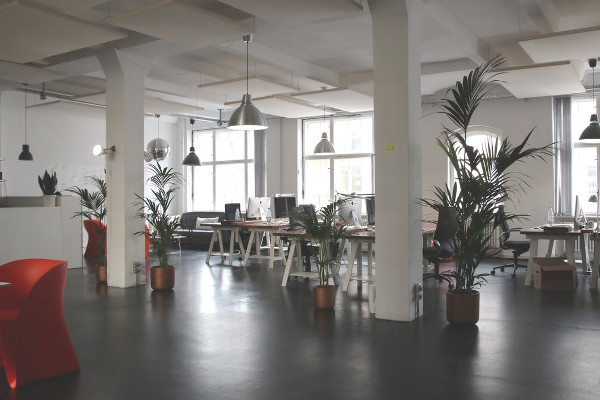Is your workspace conducive to engaged and enthusiastic employees? As new research reveals office design priorities for staff, we explore the findings and their implications for employers. Read on to learn how a well-designed office space can be a strategic aspect of your talent management strategy.
Relaxation and work: two words that don’t necessarily sit naturally together. But perhaps one cannot exist without the other, as recent research suggests not having enough space to relax at work can make employees less satisfied and engaged, leaving many employers questioning whether their workspace is meeting the requirements. And while relaxation may not be considered an immediate priority for a typical workplace, the fact that it was deemed the most important element of office design is surely worth reflecting upon.
A survey carried out by Sheffield-based Dale Office Interiors asked 500 members of the public for their views on what they thought would improve productivity levels at work when it came to office design. That one in five respondents said having a dedicated space to relax at work would help them to be more productive highlights just how important an effectively designed office can be.
Also read: Workplace Design Trends – 5 Ways to Increase Productivity at Work
By creating a breakout area for staff to relax at lunchtime and conduct informal meetings away from their desks, employers are using space effectively while addressing a range of health and wellbeing issues, including eyestrain, backache and stress caused by too much time spent at a computer. This simple design alteration can also encourage a more engaged, collaborative culture within the company, whereby employees are free to share skills and knowledge in an open space, as well as recharge away from their screens, which can improve productivity and creativity in the long run.
Up your tech game
The survey results also showed that, following a breakout area, better technology was associated with improved productivity by 17.5% of respondents.
Given that major technological advancements are likely to be costly to a business, looking at simpler solutions, such as providing more power sockets, faster Wi-Fi or investing in a couple of tablet devices for communal use, could make the world of difference to employee morale and engagement.
Also read: Using Technology to Improve Engagement and Boost Productivity
Interestingly, the idea of better technology appeared to be of higher importance to the 55 to 64 age group in the survey (21.6%) than to 25- to 34-year-olds (15%). This may suggest the younger age group is already used to accessing modern technology in the office, while their more mature counterparts would welcome advancements in this area.
Striking a balance
The need for a balance between an open plan office layout and partitioned, quieter areas was also highlighted by the research. Quiet, private spaces to make phone calls or concentrate away from the hub of the office were deemed important to 17.1% of respondents, which suggests the modern tendency for a fully open plan space isn’t necessarily the best solution for keeping staff engaged in their work.
The 45 to 54 age group rated privacy the most important factor for increasing productivity in the office, which indicates this group is comfortable with more traditional workspaces that incorporate private offices and meeting rooms.
Keeping clutter at bay
Too much clutter in the office is also seen as a hindrance to productivity according to the research, with 13.5% of respondents believing a clear workspace would help drive their performance. This finding highlights the importance tidying away excessive wires and papers and using storage space effectively, particularly if your office has a largely open plan design: too much clutter could put off not just existing employees but prospective staff and clients.
And ridding your office of wires can result in financial benefits, too, since a reduction in individually wired workstations can decrease power and cooling costs. It’s always good to regularly assess your power requirements to see if there’s any scope for savings.
Also read: How Decluttering Your Workspace Can Make You A Better Employee
Work, rest and play
A number of other factors emerged as important to office staff, including better amenities, such as good toilets, showers and kitchen facilities (8.7% of respondents), the ability to customise a workspace (10.2%) and the provision of a games room (11.4%).
An interesting contrast in age was seen for the latter: almost three times as many 25- to 34-year-olds (14%) considered a games room to be conducive to productivity as 55- to 64-year-olds (5.4%). What this indicates is that by taking on board not just the wider elements of office design but the demographics and individual preferences of the staff who make up your business, you’re in a far better position to drive productivity levels as a result of boosting employee satisfaction and engagement.
Conducting a staff survey is a good place to start to establish exactly where there may be room for improvement in your workspace before you embark on any design changes. With this small measure your employees will feel more engaged in the planning process and the results could pay dividends for your business.
Download the eBook and get practical ideas on designing employee engagement activities for your team!
Image 1 licensed from Depositphotos.com, Image 2 via Pexels.com







Leave A Comment